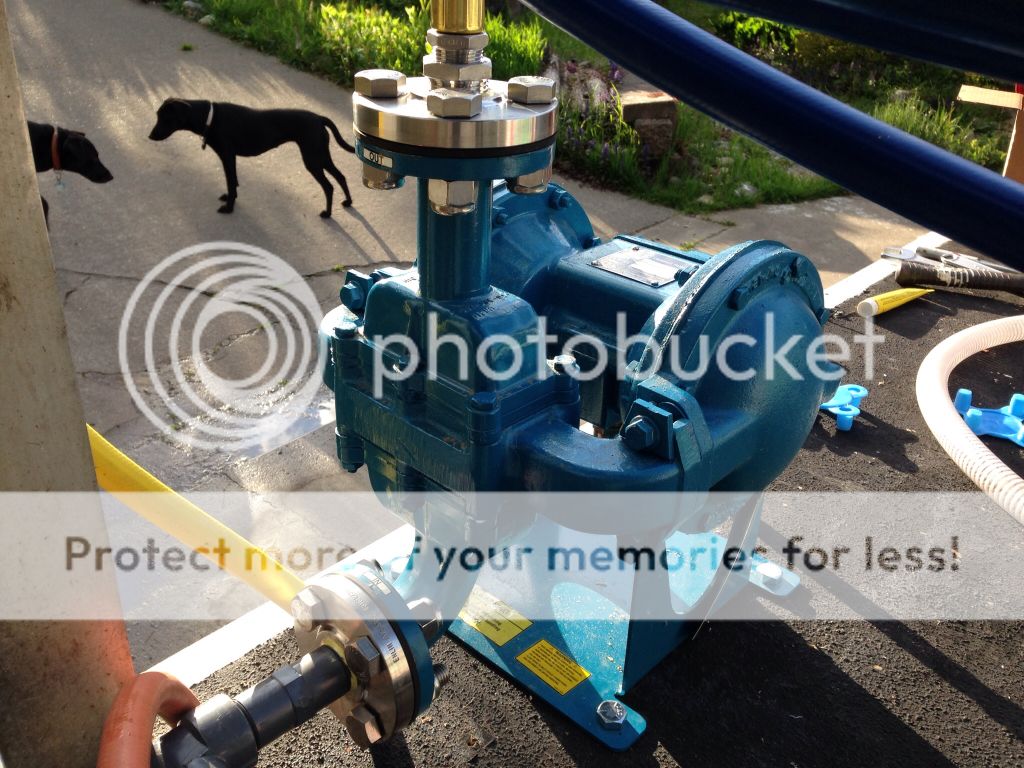PeakOfPerfection
New member
Finally got it mounted. 1" Hastelloy AODD pump setup. 3/4" Spray Line.






that seems like over-kill? Even with the allflow we find ourselves choking them down to control runoff.. Whats your reasoning behind the 1 inch?
I find our filter/ separator has been lacking lately in the 90% humidity down here in the tropics, I was told the tp filter is the only way to go on the air pumps. Damn pumps been stalling above 70psi. What psi do you set that monster compressor you have p.o.p.?

Next, we have moss...a lot of moss...a HELL of a lot of moss. So we rinse. Rinsing doesn't need throttling. The bigger the flow on a rinse, the faster and more productive you are.
I just got a compressor and an All-Flo pump, but now I think I am over my head. Lol I'm not sure what the separators and filters look like, where to get them, or where and how to hook them up.
Sent from my DROID RAZR using Tapatalk
Kevin, also living here in the Pacific Northwest, I really feel your moss pain! LOL
BTW, I really like your Bellingham Roof Moss Killing site. Very well done!

Thanks...my website is woefully out of date and needs to be brought into the modern age. Just no time to do it.
As for moss...yeah, you guys deal with it in Portland too! The guys down south who have nothing but GM infested roofs and don't deal with a lot of moss have no idea just how much more work it brings to the table, especially when roofs look like this...
Yeah, when we were done, the roof was totally clean and moss/debris free! Saved the homeowner from putting a new roof on as what was underneath was still actually serviceable.
All done with air blowers and low pressure cleaning. We now have an air reel on the truck for doing debris blowdowns...one big advantage of running a big truck mount compressor! No more
big backpack or hand held gas blowers to lug around on the roof!
By the way...I am looking into getting a hot water PW truck mount. What machines do you guys run?
Wow that's nuts it makes me wonder what the inside looks like that's wild.Did he say why he hadn't cleaned it until now.
How big is the compressor that you're using? Tank size?
I think that nearly all the guys here on PWI would agree that the Water Dragon hot water skid is among the best. Best heat rise, well made, good price.
Relax! Air is actually easy compared to electric.
In order of placement...assuming your compressor has a built in regulator...it goes:
Compressor...water separator...filter...pump.
If you do NOT have a regulator on the compressor, then it would go as such:
Compressor...water separator...filter/regulator combo...pump.
It is best to have 10' between the water separator and the compressor. Why? Because it gives the air stream a bit of time to cool and condense, making the water separator more effective.
The water separator I listed in the link above is designed for 1/2" air lines. I like running 1/2' lines even with a smaller pump because the bigger air line has lower friction loss and it isn't' really any more expensive. It also future proofs you in case you end up buying a bigger air pump in the future. If you don't think that will happen, you can buy the smaller 3/8" version on Amazon.
As for a filter....ditto on Amazon.
http://www.amazon.com/SMC-AF20-N02C...TF8&qid=1399944869&sr=1-3&keywords=smc+filter
What do they do? Air, when it is compressed, has the water squeezed out of it. Once it leaves the compressor, the water condenses out as it cools. If that water gets to your air pump, think what happens when you take a highly compressed gas and release it...it gets COLD! If there is water vapor in the line, it freezes, usually clogging the muffler. Long story short, you will be pumping merrily away on a humid day and your pump will stop because it is plugged up with ice. The water separator makes sure you can keep pumping merrily away and not have to climb down, unscrew the pump muffler to unfreeze it...all the time emitting language that would make a sailor blush.
The filter makes sure that the air you are putting into your pump is clean. Dirt, dust, rust flakes from the tank, and other gunk can clog up and eventually ruin the air section of the pump. The air section is the spendy bit to rebuild. You want it being fed only clean dry air if possible for the longest possible life.
